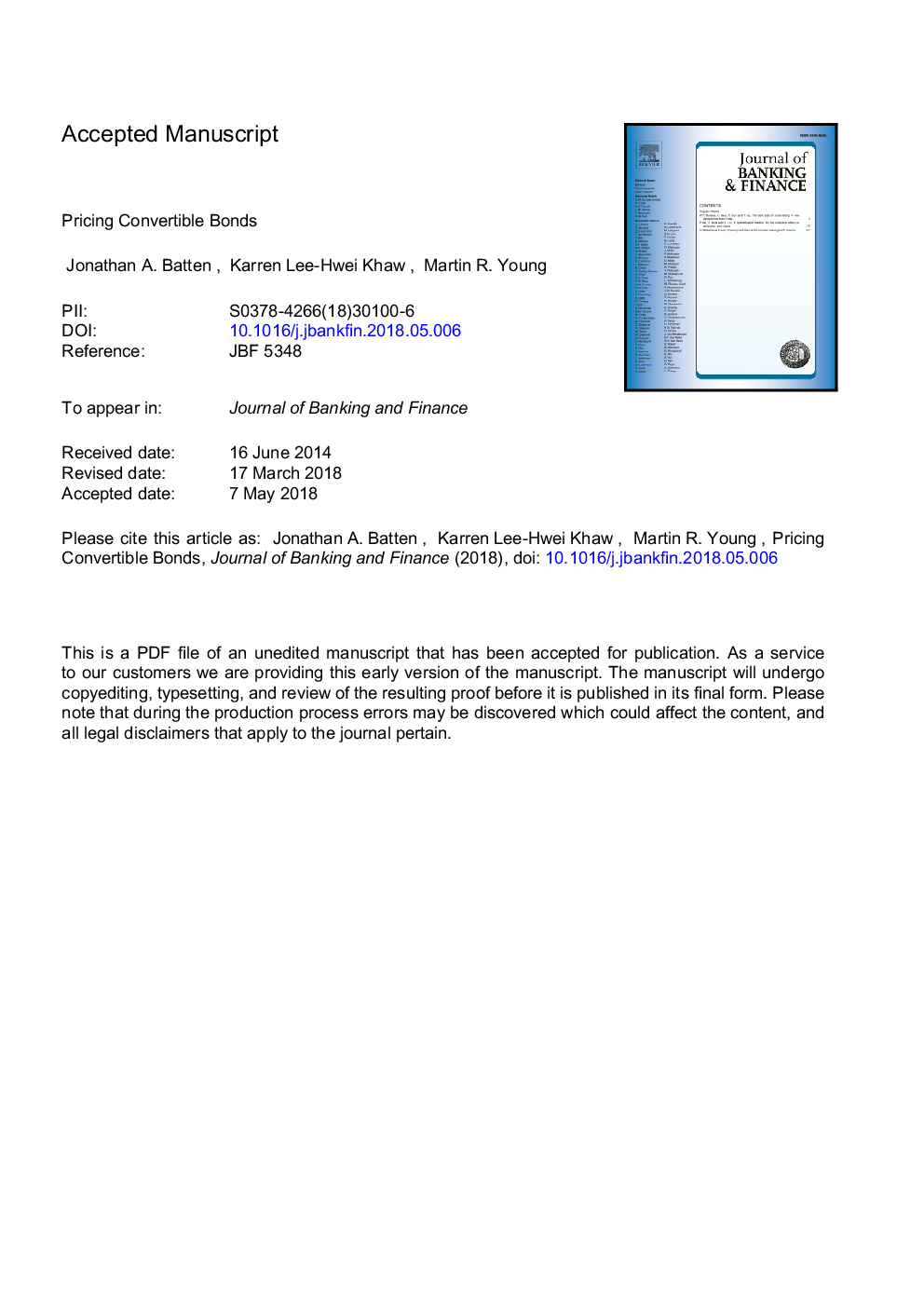| Article ID | Journal | Published Year | Pages | File Type |
|---|---|---|---|---|
| 7356523 | Journal of Banking & Finance | 2018 | 73 Pages |
Abstract
Convertible bonds are an important segment of the corporate bond market although their pricing is compromised by the presence of complex option features and difficulty in measuring the risk factors needed as inputs to standard valuation models. Using a unique sample of pure U.S. convertible bonds, devoid of other optionality, we show that underpricing is affected mainly by the degree of underlying asset volatility and liquidity. Convertible bonds with a greater debt component (more credit sensitive), longer time to maturity and lower quality credit ratings are also found to be more underpriced. The global financial crisis (GFC) is an episode with high-underlying asset volatility and one subject to short-selling constraints. During this period there was deep convertible bond discounting, which highlights the importance of market conditions and the temporal, rather than systematic, nature of the pricing errors.
Related Topics
Social Sciences and Humanities
Economics, Econometrics and Finance
Economics and Econometrics
Authors
Jonathan A. Batten, Karren Lee-Hwei Khaw, Martin R. Young,
